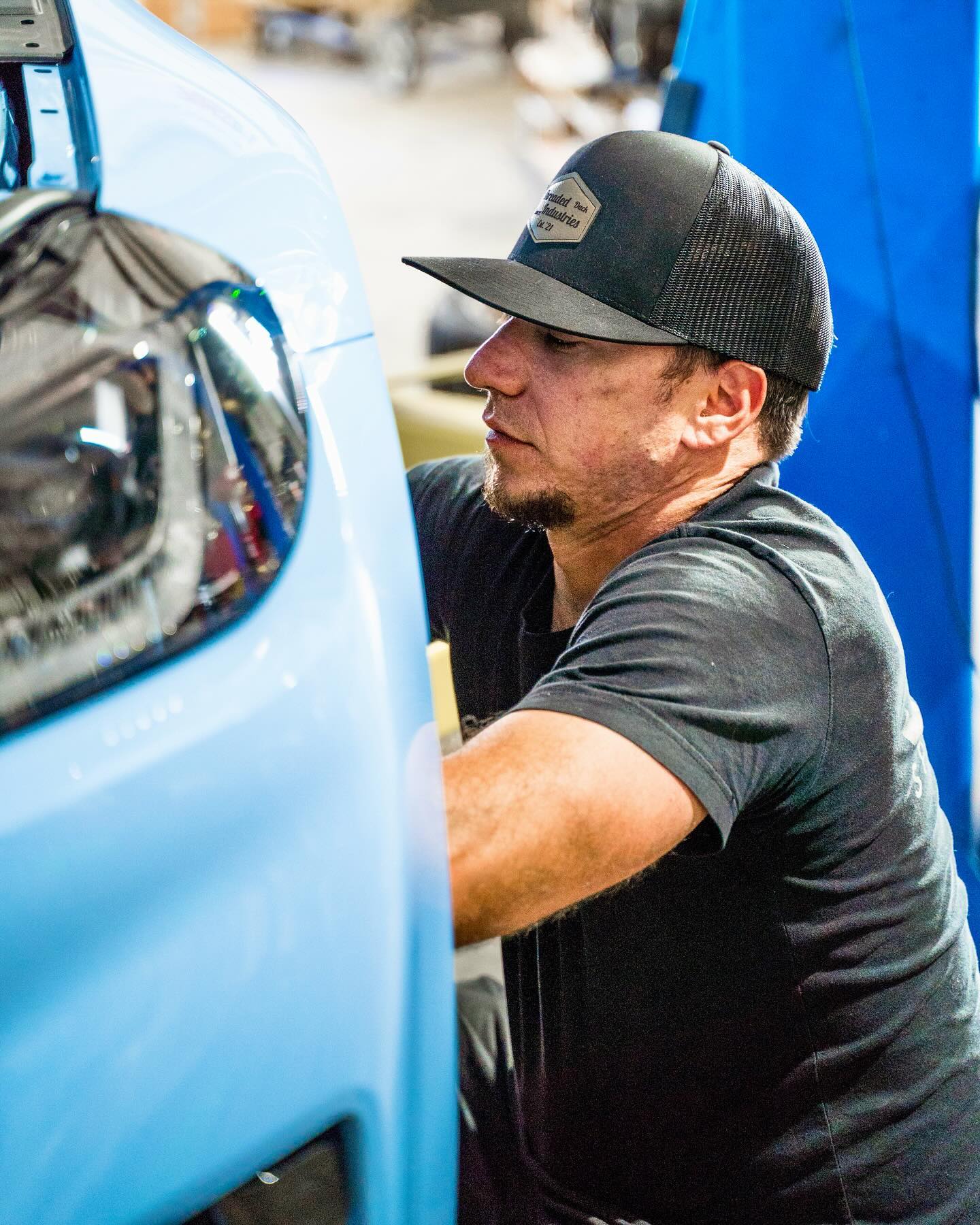
Aftermarket vs. OEM Parts: When Each Makes Sense for Your German Car
When it comes to maintaining your German car, choosing the right parts can make all the difference. Choosing between aftermarket and OEM parts is a decision that affects reliability, performance, resale value, and operating cost. This article explores the critical differences between aftermarket and OEM parts, helping you make informed decisions based on performance, reliability, and cost.

Understanding the Basics: What Are Aftermarket and OEM Parts?
OEM parts are components that were originally designed and supplied for your vehicle by the manufacturer or an authorized supplier. OEM parts carry the advantage of strict fitment, documented specifications, and testing protocols that align with the original vehicle design. For German car parts, where engineering tolerances and sensor integration are often tighter than in many other vehicles, that fit and validation process matters for both day to day operation and long term durability.
Aftermarket parts span a wide spectrum from direct-fit replacements that match OEM specifications to performance-oriented upgrades and budget-oriented generic options. The potential advantages of aftermarket parts include cost savings, greater availability of upgraded performance choices, and a broader selection for vehicle upgrades. Savvy owners and service professionals weigh the intended use of the car and the specific component before deciding whether an aftermarket option delivers the expected value without introducing undue risk.
What OEM Parts Mean for German Car Owners
OEM parts were designed to meet the automaker's tolerance, calibration, and diagnostic expectations. For owners of vehicles built with complex electronics and advanced driver assistance systems, OEM parts reduce the risk of error codes, intermittent faults, and calibration mismatches. OEM parts also support consistent maintenance histories that many buyers expect at resale.
Types of Aftermarket Parts and Where They Fit
Direct-fit replacements that replicate OEM performance and installation characteristics.
Performance-oriented parts that increase output, reduce weight, or change response characteristics.
Remanufactured components that restore worn parts with new internals for cost efficiency.
Generic or economy parts that focus on affordability for non-critical applications.
Each category carries different tradeoffs in quality assurance, warranty coverage, and expected lifespan.
How to Verify Part Origin and Authenticity
When assessing a part, look for OEM part numbers, supplier branding, and certification markings. For braking components within European markets, regulatory conformity marks are relevant. Packaging, serial traceability, and supplier documentation are practical signals that distinguish a genuine OEM item from a lookalike. For aftermarket parts, vendor certifications and published fitment lists help confirm compatibility.

Performance vs. Reliability: Making the Right Choice
Aftermarket parts are often chosen to deliver measurable car performance improvements through increased power, better flow, reduced weight, or firmer handling. Enthusiasts and specialist shops choose upgraded turbochargers, intercoolers, exhaust systems, tuned engine management, and suspension components when the primary objective is maximum dynamic output. These parts can transform a factory setup into a higher performing package when engineered and installed correctly.
Reliability concerns appear when aftermarket components change operating conditions beyond what the original design specified. Fitment deviations, material differences, or altered thermal characteristics can accelerate wear on adjacent systems or trigger fault monitoring. For German vehicles that rely on intricate sensor networks and stringent calibration, even a small mismatch in sensor response or coolant flow can cascade into drivability issues or component failure. Carefully matching the intent of the upgrade to the system architecture helps manage these reliability risks.
How Aftermarket Parts Deliver Performance Gains
Aftermarket parts targeted at performance frequently prioritize airflow, weight reduction, and thermal control. Examples include free flowing exhaust systems that reduce backpressure, cold air intakes that improve volumetric efficiency, and upgraded charge cooling that lowers intake temperatures. When combined with supporting changes such as fuel system upgrades and software calibration, these components can deliver substantial increases in usable power and response.
Assessing Reliability Risks with Aftermarket Choices
Compatibility and validation are the primary reliability questions for any non OEM component. A part that physically fits can still cause issues if sensor calibration or dynamic ranges differ from factory expectations. Electrical connectors, sealing surfaces, and material composition are common sources of long term problems. Using reputable suppliers, ensuring parts have returned fitment data, and testing in real driving conditions reduce the likelihood of downstream failures.
When Performance-Oriented Aftermarket Parts Make Sense
Aftermarket performance parts make the most sense when the vehicle is intended for track use, specialized commercial applications, or as a performance demonstrator for a business. For business owners who operate a specialty repair shop or run a fleet of enthusiast vehicles, the ability to offer measurable upgrades that customers value supports higher margins. The critical step is to pair performance components with proper cooling, calibration, and maintenance regimes to preserve reliability.

The Impact of Warranties on Your Decision
Using OEM parts typically simplifies warranty management because OEM replacements align with manufacturer service recommendations and maintain a clear parts history. When a vehicle under a manufacturer warranty receives OEM replacement parts during servicing, disputes over coverage are less likely because the service work follows the supplier's confirmed specifications. OEM parts also help maintain documented maintenance records that can affect warranty adjudication and resale valuation.
Aftermarket parts do not automatically void a warranty under many consumer protections in regulated markets, but they can influence warranty claims when damage can be traced to the aftermarket component. Federal consumer warranty protection in some jurisdictions prevents blanket denial of coverage solely for aftermarket modifications. However, if an aftermarket part is implicated in a failure, the manufacturer or dealer may limit coverage for the associated repair. The prudent approach is to document all maintenance, keep receipts for parts and labor, and use qualified technicians for installations to reduce disputes.
Using OEM Parts to Preserve Warranty Integrity
Choosing OEM parts during scheduled servicing reduces ambiguity when warranty claims arise. OEM documentation and fitment history create a straightforward paper trail for warranty adjudication. For fleets or businesses that require predictable warranty outcomes, specifying OEM parts in service agreements is a practical risk mitigation strategy.
Aftermarket Parts and Warranty Claims: What to Expect
When aftermarket parts are used, expect the warranty process to require proof that the aftermarket component did not cause the failure in question. Dealers and manufacturers will evaluate causation. Providing professional installation records, test data, and part traceability shifts the discussion from assumption to evidence, improving the chance of fair handling.
Documentation Steps to Avoid Warranty Disputes
Keep clear invoices that identify part numbers and supplier names.
Use certified technicians and maintain service checklists.
Retain removed OEM parts when possible to demonstrate original condition.
Capture diagnostic logs and pre and post installation test results.
Those steps create a defensible service record that helps maintain warranty coverage when aftermarket parts are part of the maintenance pathway.
Cost-Benefit Analysis: Choosing the Right Part for Your Needs
Evaluating replacement parts requires more than comparing shelf prices because total cost of ownership and functional outcomes matter. OEM parts often carry a price premium but deliver documented durability, compatibility, and peace of mind that reduce hidden costs. Aftermarket parts can offer strong value, especially when they serve as direct-fit replacements or when the owner seeks a performance upgrade that provides measurable returns.
Long term savings often come from analyzing lifespan, maintenance intervals, and the risk of collateral damage. A lower priced component that fails prematurely can generate higher overall repair costs through additional labor and related part replacement. Conversely, for wear items where performance parity exists between OEM and aftermarket options, the aftermarket can deliver immediate cost benefits without higher risk. The right evaluation blends part category specifics with the vehicle usage profile.
Breakdown by Part Category
Brakes
Brake hardware is safety critical. Choose OEM for rotors and calipers when you prioritize consistent pedal feel and sensor integration. Consider certified aftermarket pads for improved stopping performance when matched with rotors and properly bedded in by a qualified technician.
Filters and Fluids
Air filters, oil filters, and fluids are cost effective areas for aftermarket substitution when products meet published specifications. High quality aftermarket filters can offer comparable protection for routine car maintenance without eroding reliability.
Engine Internals and Forced Induction Components
Internals and turbocharger assemblies are high risk areas for aftermarket substitution without comprehensive validation. OEM or high end aftermarket components explicitly engineered for your vehicle are recommended to avoid catastrophic failures and consequent repair escalation.
Electronics and Sensors
Sensors and modules interact with vehicle diagnostic systems, so OEM parts are generally preferable. Aftermarket electronics that are reverse engineered can work, but require careful compatibility checks and often bespoke calibration.
Body Panels and Exterior
Panels and trim are frequently replaced with aftermarket options with acceptable results for non structural repairs. For vehicles where fit and finish affect brand perception or resale, OEM panels retain higher value.
Performance Upgrades
Performance components from reputable aftermarket manufacturers can deliver significant gains, but they typically require supporting modifications and calibration. Budget conscious upgrades should be part of a plan that includes thermal management and driveline reinforcement.
Long Term Savings Versus Initial Investment
Consider expected service intervals and the marketplace for resale when deciding. Higher initial investment in OEM parts can reduce downtime and unexpected repairs, which matters for commercial operations and business owners managing multiple vehicles. Aftermarket savings are maximized when the parts chosen have established performance histories, clear warranty coverage, and are installed by experts who can ensure longevity.
Making Smart Choices for Your German Car Maintenance
Selecting quality aftermarket parts requires disciplined vendor selection, verification of specifications, and a conservative approach to modifications that affect core vehicle systems. Prioritize suppliers with traceable warranty programs and demonstrable validation on vehicles similar to yours. For business owners, building relationships with parts distributors that supply both OEM and reputable aftermarket brands provides operational flexibility and purchasing leverage.
Ensure compliance with vehicle specifications by consulting technical bulletins, wiring diagrams, and manufacturer service literature. Calibration procedures, torque sequences, and software updates often accompany replacement parts for modern German cars. Skipping these steps can turn a low cost parts decision into a costly repair and a loss of operational credibility.
Choosing Trusted Aftermarket Brands and Suppliers
Evaluate supplier warranty terms and return policies.
Confirm whether the vendor publishes fitment verification for your vehicle make and model.
Prefer brands that provide testing data, material certifications, and dealer level support.
Reputable suppliers often offer white papers and validation resources that reduce the risk of a poor selection.
Verifying Part Compatibility and Compliance
Start by cross referencing part numbers with official parts catalogs or trusted databases.
Check that connectors, mechanical interfaces, and mounting points match factory configurations.
Confirm whether software or calibration updates are needed after installation.
Following a repeatable verification sequence prevents surprises at installation and avoids diagnostic pitfalls during servicing.
Maintenance Best Practices for Longevity
Use documented torque sequences and lubrication specifications during installation.
Schedule follow up inspections after the initial running hours to catch early faults.
Maintain service records that include part source, batch numbers, and installer notes.
Those maintenance practices preserve reliability and support defensible documentation in warranty discussions or resale scenarios.
Partner with SPEEDhaus for the Perfect Parts Strategy
Whether your goal is to preserve your German car’s factory precision or unlock its performance potential, the right parts choice is critical. At SPEEDhaus 405, we combine deep technical expertise with hands-on installation and calibration to ensure every component—OEM or aftermarket—works in harmony with your vehicle. From sourcing and validation to compliant installs and warranty-safe documentation, we give you the confidence to drive hard and maintain reliability.
Book your consultation today and let’s build a parts plan that delivers the balance of performance, longevity, and value your car deserves.

